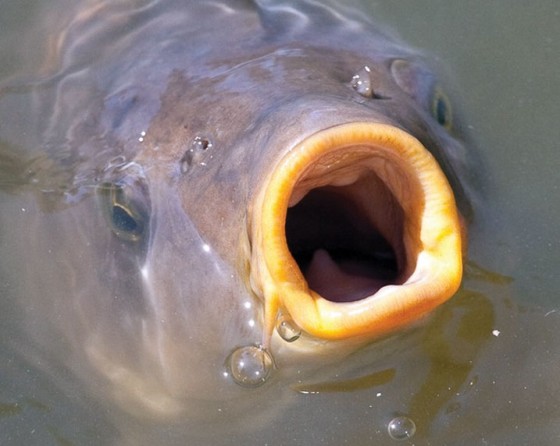Creepy Carp Haunt the Lake
As if the ingress of bully bass to Lake Atitlán were not bad enough (see Revue August 2011, Lake Views, page 88), another alien may be even more harmful. At least since 2002, carp of the genus Cyprinus have been appearing in fishermen’s trawling nets. No one knows when they got there, nor what to do about them.
“They have absolutely no natural enemies,” says diver Roberto Samayoa, curator of Panajachel’s Lacustre Museum. “The bass at least limit themselves through cannibalism. But they don’t eat carp.”
Bass and carp occupy different zones, with the carp being strictly bottom feeders. And when a bass does encounter a carp small enough to eat, the bass shuns it because of the carp’s long dorsal and pectoral spines. These make swallowing a painful, if at all possible, proposition.
As a food fish, the carp is a bust. Unlike the bass, whose skeleton is easily separated from the filet, the carp’s skeleton is complex and enmeshed like a network of weed roots in the flesh. That flesh is edible but only marginally palatable.
Trawlers have found some uses for them. They can be boiled to make a poor man’s caldo (soup broth), used for fertilizer, or dried and milled, then added to chicken mash. An unconfirmed report has them being used at Mayan altars.
The carp infesting the lake are not descendants of ornamental koi. They are the wrong shape and tend to be army-greenish.
The carp are prolific breeders that outlive most other fish. And unlike the large-mouthed bass, the carp have small tapering mouths for concentrated, vacuum-like suction on the bottom, where they ingest the shoots of litoral plants, tiny invertebrates and the eggs of crabs and snails. All these factors make them a pest of the first order.
According to Atitlán fishermen, specimens of up to about 90 centimeters have been taken. It is possible that all of them came from one pair of introduced carp or even a single gravid female.
Samayoa is seeking novel ideas for the reduction of the carp population and for their commercial use.
“Whoever did this caused untold harm to the lake and to the economy of the Atitlán Basin,” Samayoa says. “It amounts to sabotage.”
